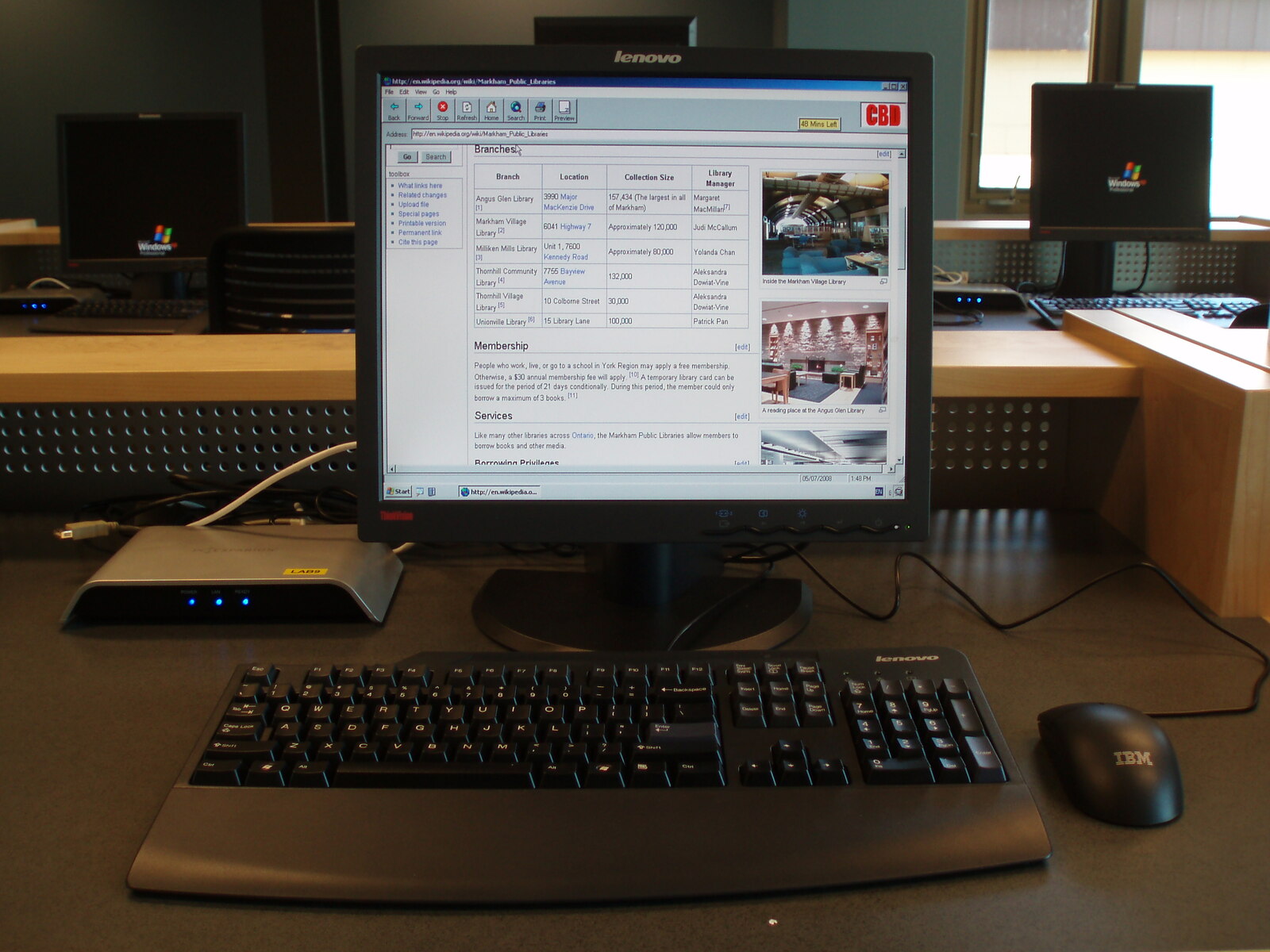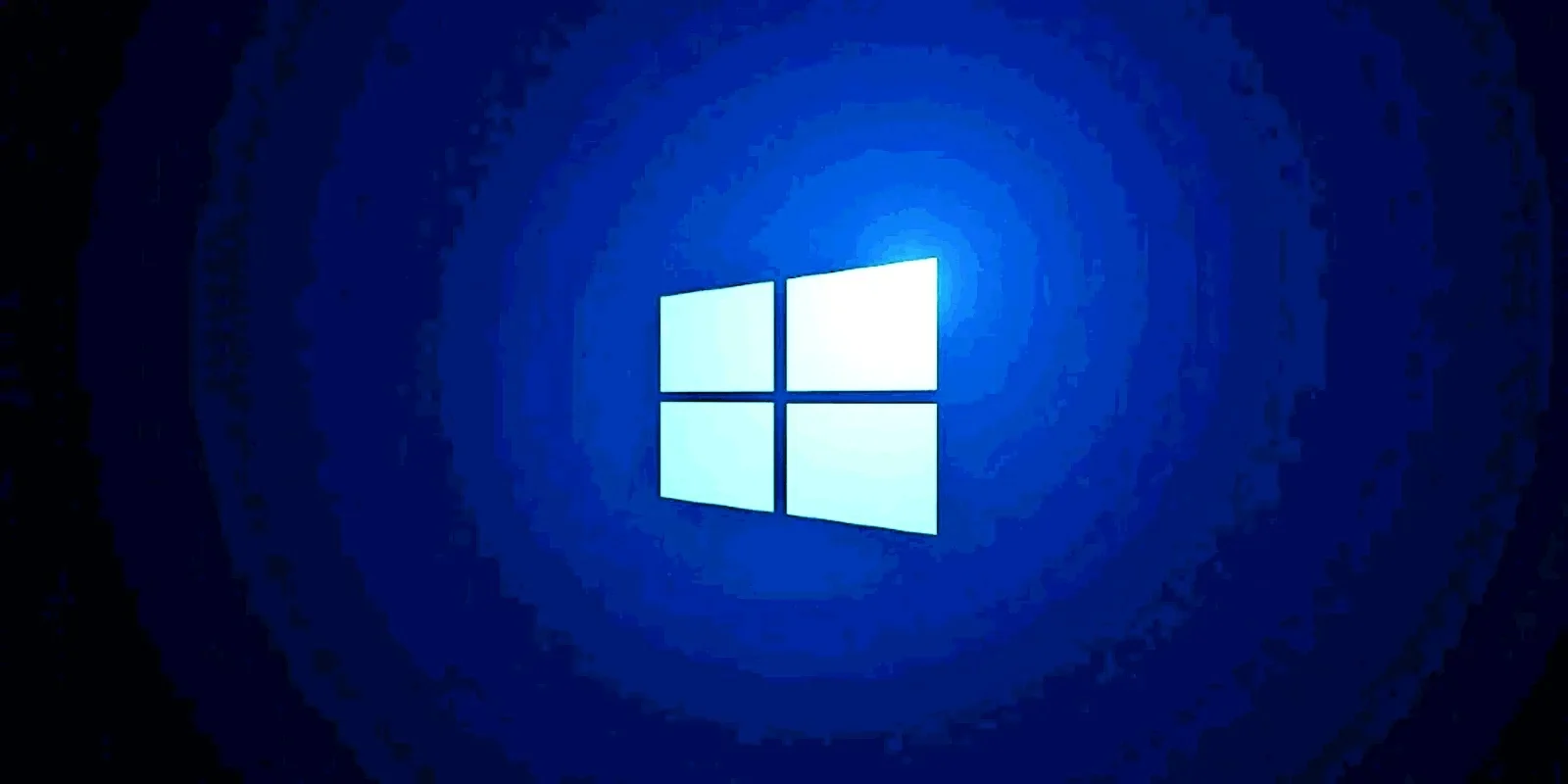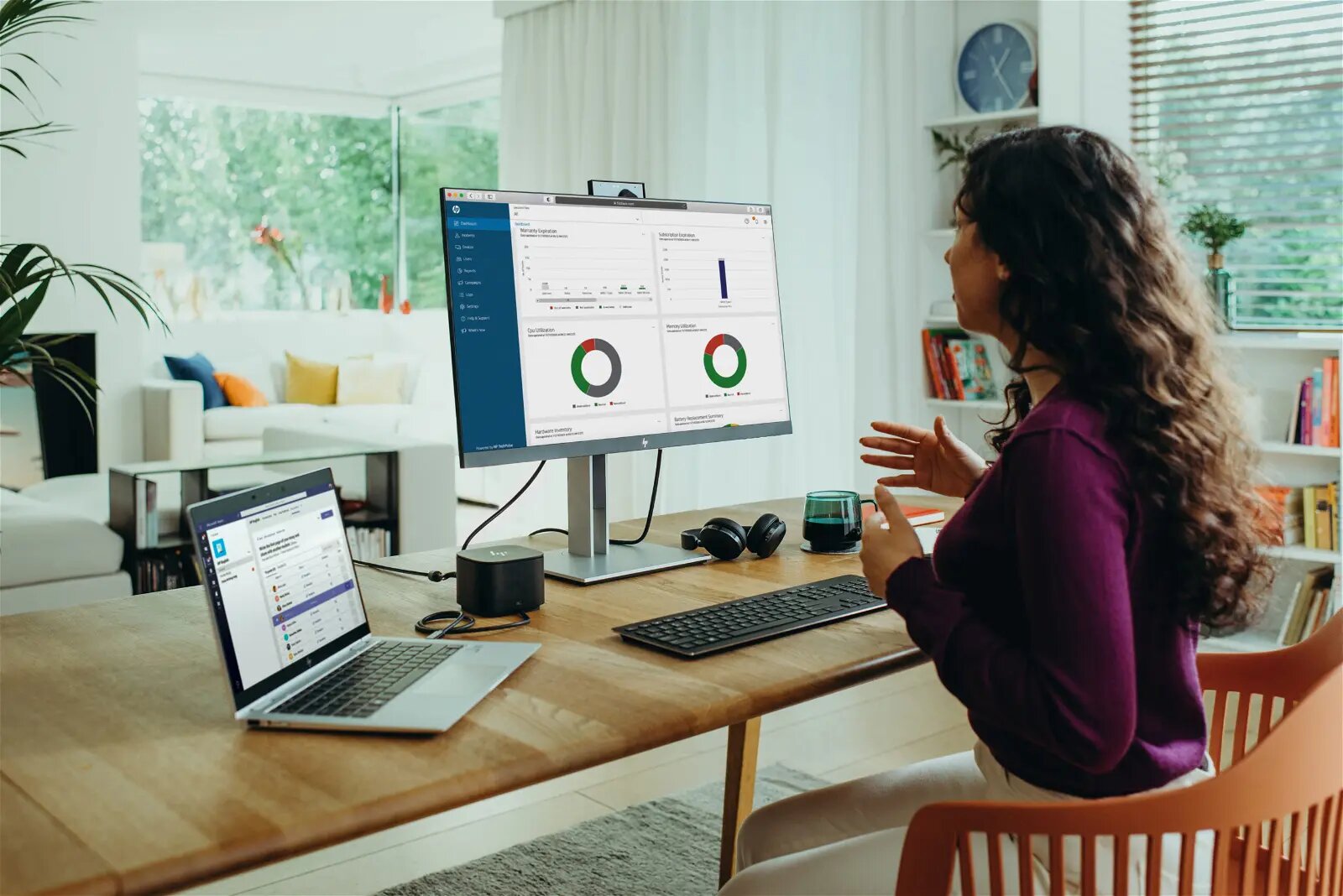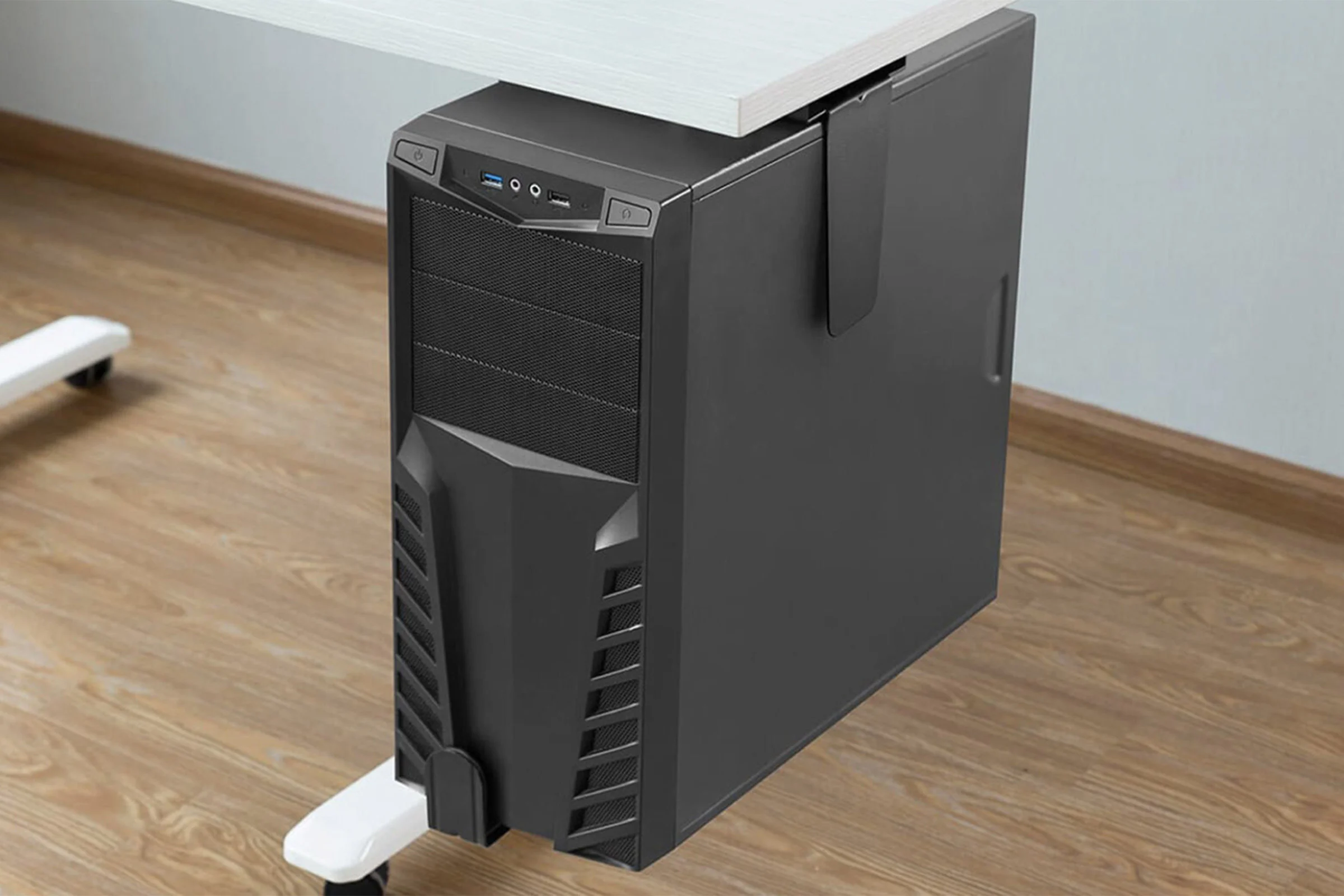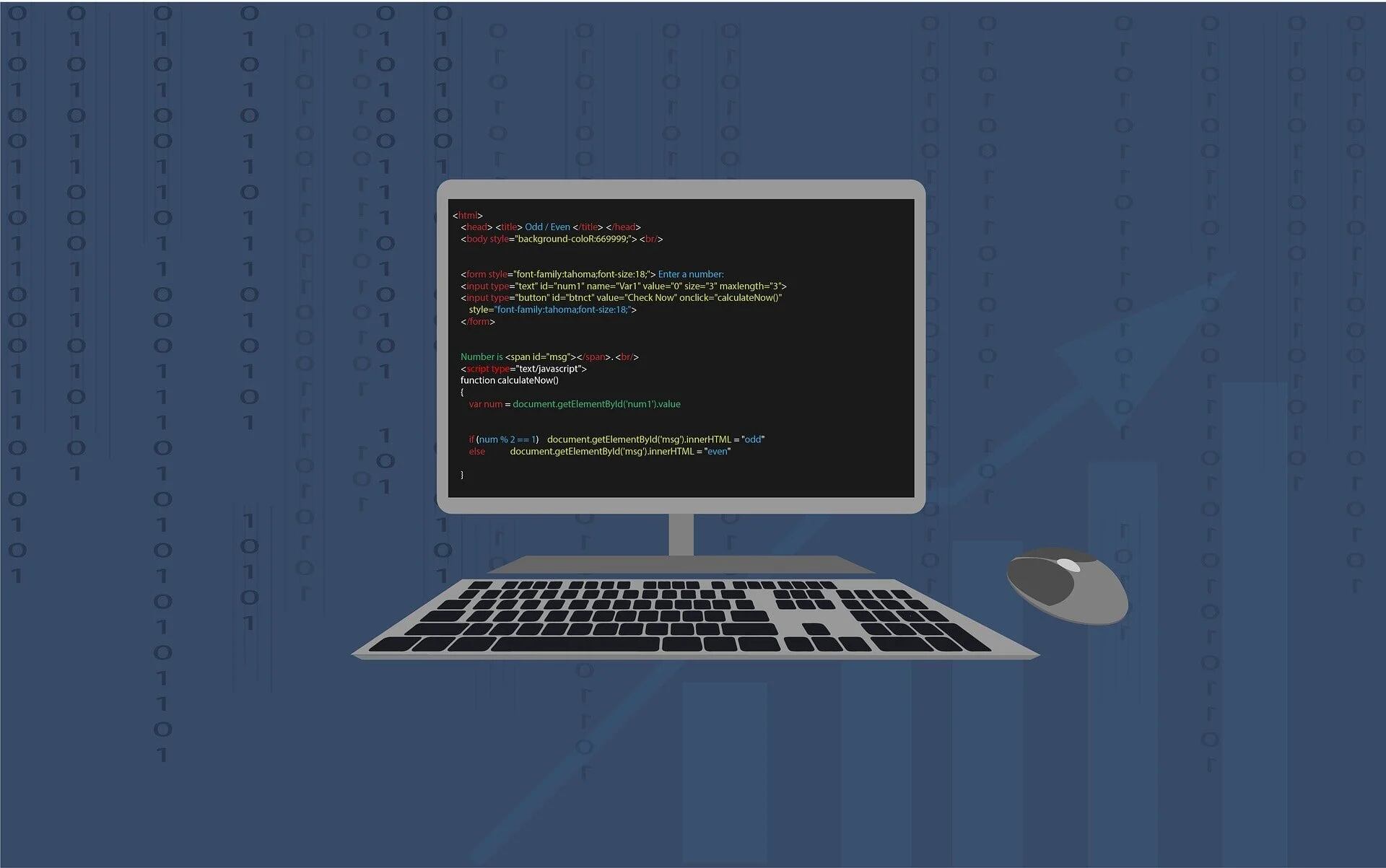Introduction
A thin client workstation, also known as a thin client computer, is an end-user computing device that relies on a server to perform most of its processing, storage, and computing tasks. Unlike traditional desktop computers, which have their own operating systems and installed applications, thin client workstations are designed to be lightweight and rely on a central server or cloud infrastructure for computing power.
Thin client workstations have gained popularity in recent years due to their numerous advantages, including cost-effectiveness, ease of management, and enhanced security. By offloading most of the processing tasks to a central server, organizations can save on hardware costs and reduce the complexity of managing individual desktops.
In this article, we will explore how thin client workstations function, the advantages they offer, and their various use cases. We will also compare them to traditional desktop computers and discuss the considerations for choosing a thin client workstation. Additionally, we will cover the setup process and important security considerations to ensure a seamless and secure thin client computing environment.
What is a Thin Client Workstation?
A thin client workstation is a computing device that relies on a server or cloud infrastructure to handle most of its processing and storage tasks. It is a lightweight and simplified alternative to traditional desktop computers, which typically have their own operating systems and installed applications.
Unlike a traditional desktop, a thin client workstation does not have its own hard drive or processor. Instead, it connects to a central server or cloud environment, where all the computing resources are located. This server is responsible for running applications, storing data, and handling other resource-intensive tasks, while the thin client device acts as a simple interface for the user to interact with these resources.
Thin client workstations are designed to be cost-effective and highly manageable. Since the heavy lifting is done by the server, organizations can save on hardware costs by utilizing lower-specification thin client devices. These devices are typically smaller and consume less power than traditional desktop computers, resulting in reduced energy costs and a smaller environmental footprint.
Another advantage of thin client workstations is their simplified management. Software updates, security patches, and application installations can be centrally managed on the server, eliminating the need to individually update and manage each individual device. This centralized approach streamlines administration tasks and reduces IT overhead.
Additionally, thin client workstations offer enhanced security. Since the data and applications are stored and processed on the secure server, the risk of data breaches and unauthorized access is minimized. Furthermore, because there is no local storage on thin client devices, sensitive data is not at risk of being lost or stolen if a device is compromised.
In summary, a thin client workstation is a lightweight and cost-effective computing device that relies on a central server or cloud infrastructure to perform most of its processing and storage tasks. By offloading the computational burden to the server, organizations can benefit from simplified management, reduced hardware costs, and enhanced security.
Advantages of Using Thin Client Workstations
Using thin client workstations offers numerous advantages for organizations. These advantages include cost savings, ease of management, enhanced security, and improved scalability.
One of the key advantages of thin client workstations is cost savings. Since the processing and storage tasks are handled by the server or cloud infrastructure, organizations can save on hardware costs by using lower-specification devices. Thin client workstations are typically less expensive to purchase and maintain compared to traditional desktop computers.
In addition, thin client workstations are easier to manage. With a centralized server or cloud infrastructure, software updates, security patches, and application installations can be done in one location and applied to all thin client devices simultaneously. This eliminates the need to individually update and maintain each device, resulting in time and cost savings for IT administrators.
Enhanced security is another advantage of thin client workstations. Since the data and applications are stored on the server rather than on the devices, the risk of data breaches and unauthorized access is significantly reduced. This centralized approach to data storage and processing ensures that sensitive information remains protected.
Thin client workstations also offer improved scalability. Adding or removing devices from the network is straightforward, as the processing power resides on the server. This flexibility allows organizations to easily scale their computing resources based on their needs, whether they are expanding or downsizing.
Furthermore, thin client workstations contribute to energy efficiency. As these devices consume less power compared to traditional desktop computers, they help reduce energy costs and contribute to a greener environment. With increasing focus on sustainability, this advantage is particularly appealing to organizations.
In summary, using thin client workstations provides numerous advantages, including cost savings, simplified management, enhanced security, scalability, and energy efficiency. These benefits make thin client workstations an attractive choice for organizations looking to streamline their IT operations and optimize their computing resources.
How Does a Thin Client Workstation Function?
A thin client workstation operates by connecting to a central server or cloud infrastructure where the majority of the processing and storage tasks are performed. It acts as a simple interface for users to access applications and data that are hosted on the server.
When a user interacts with a thin client workstation, the device sends the input to the server, which then processes the input and sends the corresponding output back to the thin client device. This allows users to perform tasks such as running applications, accessing files, and conducting other computing tasks.
Thin client workstations rely on remote display protocols to transmit the graphical user interface (GUI) from the server to the device. These protocols, such as Remote Desktop Protocol (RDP) or Virtual Network Computing (VNC), compress and transmit the GUI information over the network, allowing the user to see and interact with the applications and data as if they were running locally on the thin client device.
The central server or cloud infrastructure that powers the thin client workstation is responsible for running the operating system and applications. It stores the data and performs the processing tasks, while the thin client device serves as a lightweight endpoint that facilitates the user’s interaction with the server.
Thin client workstations typically have minimal local storage and processing power, as their main function is to connect to the server and relay inputs and outputs. These devices are designed to be cost-effective and energy-efficient, making them suitable for deployments where the bulk of the computing resources reside on the server.
Furthermore, the thin client devices are managed centrally. System administrators can control and manage the devices from a central location, making it easier to deploy updates, manage security configurations, and ensure consistent performance across the network.
In summary, a thin client workstation functions by connecting to a central server or cloud infrastructure for processing, storage, and computing tasks. It facilitates the user’s interaction with applications and data hosted on the server, transmitting inputs and receiving outputs through a remote display protocol. With minimal local storage and processing power, thin client devices provide a cost-effective and manageable solution for organizations.
Applications and Use Cases for Thin Client Workstations
Thin client workstations have a wide range of applications and use cases across various industries. Their lightweight design, cost-effectiveness, and centralized management make them suitable for a variety of environments.
In the healthcare industry, thin client workstations are commonly used in hospitals, clinics, and other medical facilities. Doctors, nurses, and other healthcare professionals can access patient records, medical imaging software, and other critical applications from any thin client device within the network. This enables efficient workflow, improves patient care, and ensures data security.
Educational institutions, such as schools and universities, also benefit from thin client workstations. Classrooms can be equipped with these devices, allowing students to access educational resources and software applications from a central server. This promotes collaboration, simplifies IT management, and reduces costs by using lower-specification devices.
Another application for thin client workstations is in call centers and customer service departments. Agents can use thin client devices to access customer information, communication platforms, and other necessary tools. The centralized management of thin clients makes it easier for IT teams to configure and update these devices, ensuring optimal performance for the agents’ tasks.
Thin client workstations are also widely used in businesses and enterprises. Employees can utilize these devices to access business applications, collaborate with colleagues, and retrieve or store data on the central server. The simplified management and enhanced security features of thin client workstations make them particularly attractive to organizations looking to streamline their IT operations and protect sensitive data.
In addition, industries that require robust computing power, such as engineering, architecture, and graphic design, can benefit from thin client workstations. By leveraging the processing capabilities of the server, these industries can run resource-intensive applications and perform complex calculations without the need for high-end local hardware.
Furthermore, thin client workstations are ideal for environments that require high levels of security. Government agencies, financial institutions, and organizations dealing with sensitive data can minimize the risk of data breaches by centralizing their data and applications on secure servers, accessed through thin client devices. The absence of local storage in thin client devices ensures that even if a device is lost or stolen, the sensitive information remains protected.
In summary, thin client workstations find applications in various industries and environments, including healthcare, education, call centers, businesses, and industries requiring high computing power. They provide centralized access to critical applications and data, simplify IT management, promote collaboration, and enhance data security.
Types of Thin Client Workstations
There are several types of thin client workstations available in the market, each offering different features and capabilities. The choice of thin client workstation depends on the specific requirements and use case of the organization. Here are some common types of thin client workstations:
Hardware Thin Clients: Hardware thin clients are dedicated devices designed specifically for thin client computing. These devices are purpose-built and have minimal hardware components, making them cost-effective and energy-efficient. They typically have a small form factor and consume less power than traditional desktop computers.
Software Thin Clients: Software thin clients are software applications or operating systems that can be installed on existing hardware, such as PCs or laptops, to transform them into thin client workstations. This allows organizations to repurpose their existing hardware and extend the life of their devices. Software thin clients provide the same functionality as hardware thin clients but with greater flexibility.
Zero Clients: Zero clients are a subtype of hardware thin clients that have no local operating system. Instead, they rely on the server or cloud infrastructure to provide the operating system and perform all processing tasks. Zero clients are simple and streamlined devices and are considered highly secure as they have minimal attack surface.
Mobile Thin Clients: Mobile thin clients are thin client devices designed specifically for mobile use. They are lightweight, portable, and often have built-in wireless connectivity options. Mobile thin clients enable users to work remotely or access resources while on the move, maintaining the same level of security and centralized management as traditional thin client workstations.
All-in-One Thin Clients: All-in-one thin clients integrate the thin client hardware and display into a single unit, similar to a traditional desktop monitor. These devices provide a compact and clutter-free solution, making them suitable for environments where space is limited. All-in-one thin clients are often used in industries such as healthcare, retail, and hospitality.
Virtual Desktop Infrastructure (VDI) Clients: VDI clients are thin client devices specifically designed to work with virtual desktop infrastructure. VDI allows multiple virtual desktops to run on a single server, and VDI clients connect to the virtual desktop instances. These clients have additional features such as multimedia support and advanced graphics capabilities to provide a rich user experience.
In summary, the types of thin client workstations include hardware thin clients, software thin clients, zero clients, mobile thin clients, all-in-one thin clients, and VDI clients. Each type offers unique characteristics and features to cater to different organizational requirements and use cases.
Comparison with Traditional Desktop Computers
When considering the use of thin client workstations, it is important to compare them with traditional desktop computers to better understand the advantages and trade-offs of each option. Here is a comparison between thin client workstations and traditional desktop computers:
Cost: Thin client workstations are generally more cost-effective than traditional desktop computers. Thin client devices are less expensive to purchase, and their lower power consumption results in reduced energy costs. Additionally, thin client workstations require less ongoing maintenance and upgradation, further lowering the total cost of ownership.
Performance: Traditional desktop computers have dedicated processors and storage, allowing for high-performance computing. In comparison, thin client workstations rely on a central server for processing power, which may result in lower performance for resource-intensive applications. However, advancements in server technologies have significantly improved the performance of thin client workstations, making them suitable for most everyday computing tasks.
Management: Managing traditional desktop computers can be complex and time-consuming, particularly in large-scale deployments. Thin client workstations offer simplified management as software updates, security configurations, and application installations can be centrally controlled. This centralized management ensures consistency across the network and reduces the workload for IT administrators.
Flexibility: Traditional desktop computers provide more flexibility in terms of hardware customization and software installation. Users can select the specifications of the CPU, storage, and graphics cards according to their specific needs. In contrast, thin client workstations have limited customization options as the processing and storage are handled by the server. However, software configurations and access can be centrally customized to fit user requirements.
Security: Thin client workstations offer enhanced security compared to traditional desktop computers. Since data and applications are stored on a central server, the risk of data loss or theft from a physical device is minimized. Additionally, centralized management allows for easier implementation of security protocols, updates, and access controls, making it easier to maintain a secure computing environment.
Scalability: Thin client workstations are highly scalable as new devices can be easily added or removed from the network. This scalability makes it cost-effective to accommodate changes in workforce size or computing demands. In contrast, traditional desktop computers require individual set-ups and configurations for each new device, which can be time-consuming and expensive as the organization grows.
In summary, thin client workstations offer cost savings, simplified management, enhanced security, and scalability compared to traditional desktop computers. While some performance and customization trade-offs exist, the benefits of thin client workstations make them a compelling option for organizations looking to optimize their IT infrastructure.
Considerations for Choosing a Thin Client Workstation
When considering the implementation of thin client workstations, there are several important factors to consider to ensure the selection of the most suitable solution for your organization’s needs. Here are some key considerations:
Performance Requirements: Evaluate the performance requirements of your users and the applications they will be running. Consider factors such as CPU, RAM, and graphics capabilities to ensure that the thin client workstations can handle the workload. High-demand applications such as video editing or 3D rendering may require more powerful thin client devices.
Connectivity: Assess the network infrastructure and connectivity options available. Ensure that the thin client workstations can connect to the central server efficiently and reliably. Consider factors such as wired Ethernet, Wi-Fi, and VPN capabilities, depending on your organization’s network setup and requirements.
Application Support: Ensure that the thin client workstations are compatible with the applications and software used by your organization. Check for compatibility with operating systems, virtualization technologies, and remote desktop protocols. Compatibility issues can impact user experience and productivity.
Peripheral Support: Consider the need for peripheral devices such as printers, scanners, and specialized hardware. Ensure that the thin client workstations support the required peripheral connections, either through direct connections or network-based solutions. It’s important to verify compatibility and determine if any additional hardware or software is needed.
Management and Administration: Evaluate the management capabilities of the thin client workstations. Consider the level of centralized control and monitoring available, as well as the ease of deploying updates, configuring security settings, and managing user access. Streamlined management is essential for efficient administration and maintenance.
Security: Security is a crucial consideration when implementing thin client workstations. Assess the security features provided by the thin client devices, such as encryption, authentication protocols, and endpoint protection. Additionally, consider the security features of the server or cloud infrastructure where data and applications are stored.
Support and Warranty: Ensure that the thin client workstations are backed by reliable technical support and come with appropriate warranty coverage. Consider the availability of software updates, firmware upgrades, and firmware compatibility to ensure long-term support and stability.
Vendor Reputation: Research and evaluate the reputation and track record of the thin client workstation vendors. Consider factors such as years of experience, customer reviews, and customer support. A reputable vendor with a strong track record can provide assurance of reliability and quality.
In summary, when choosing a thin client workstation, factors such as performance requirements, connectivity, application and peripheral support, management capabilities, security features, support and warranty, and vendor reputation should be carefully considered. Evaluating these considerations will help ensure the selection of a thin client solution that meets your organization’s specific needs and provides a stable and efficient computing environment.
Setting Up a Thin Client Workstation
Setting up a thin client workstation involves several key steps to ensure a smooth and efficient deployment. Here is a guide to help you get started:
1. Assess Your Infrastructure: Evaluate your existing network infrastructure and determine if any upgrades or modifications are needed to support thin client workstations. Ensure that your network can handle the increased traffic from the thin clients and that the necessary connectivity options are available.
2. Select the Right Thin Client Devices: Consider your organization’s requirements and choose the appropriate thin client devices. Take into account factors such as performance, connectivity options, peripheral support, and budget. Ensure that the devices are compatible with your chosen server infrastructure and remote display protocol.
3. Provision the Server: Set up the server or cloud infrastructure that will host the applications and data for your thin client workstations. Install the necessary operating systems, virtualization software, and remote desktop protocol software. Configure any security settings, access controls, and user profiles based on your organization’s needs.
4. Install and Configure the Thin Client Devices: Install the thin client devices and connect them to your network. Follow the manufacturer’s instructions for initial setup and configuration. Configure the network settings, such as IP addresses and DNS settings, to ensure connectivity with the server. Install any necessary software or firmware updates on the devices.
5. Customize the User Environment: Customize the user interface and settings on the thin client workstations to suit your organization’s requirements. Set up user profiles and permissions, configure display settings, and customize any user-specific preferences. Consider providing training or documentation to users to help them navigate the new thin client environment.
6. Test and Troubleshoot: Conduct thorough testing of the thin client workstations to ensure that they are functioning properly. Test the connectivity, application performance, peripheral support, and any other key features. Address any issues or errors that arise during the testing phase, and make any necessary adjustments to the server or thin client configurations.
7. Maintain and Update: Regularly maintain and update the thin client workstations and server infrastructure. Apply security patches, firmware upgrades, and software updates to ensure optimal performance and security. Monitor the system for any issues or performance bottlenecks and address them promptly.
8. Provide Ongoing Support: Establish a support system to assist users with any technical issues or questions regarding the thin client workstations. Regularly communicate with users to address their needs and provide training or resources to help them make the most of the thin client environment.
In summary, setting up a thin client workstation involves assessing your infrastructure, selecting the right devices, provisioning the server, configuring the devices, customizing the user environment, testing, maintaining and updating, and providing ongoing support. Following these steps will help ensure a successful implementation of thin client workstations in your organization.
Security Considerations for Thin Client Workstations
Security is a critical aspect to consider when implementing thin client workstations. While thin clients offer enhanced security compared to traditional desktop computers, there are still important security considerations to keep in mind. Here are some key security considerations for thin client workstations:
Access Control: Implement strong access controls to ensure that only authorized users can access the thin client workstations and the resources hosted on the server. This includes strong password policies, two-factor authentication, and user role-based access controls. Regularly review and update access permissions as needed.
Network Security: Protect the network used by the thin client workstations by implementing firewalls, intrusion detection systems, and virtual private networks (VPNs). Encrypt network communications to secure data transmission between the thin clients and the server. Regularly monitor the network for any suspicious activities and promptly respond to any security incidents or breaches.
Endpoint Protection: Deploy endpoint protection solutions on the thin client devices to defend against malware, viruses, and other security threats. Keep the security software up to date and regularly scan the devices for any potential security risks. Consider implementing data loss prevention (DLP) measures to prevent unauthorized data leakage.
Secure Configuration: Configure the thin client workstations with secure settings to minimize vulnerabilities. Disable unnecessary services and protocols, and regularly update the firmware and software on the devices to patch any known security vulnerabilities. Additionally, configure the devices to automatically check for and install security updates.
Data Protection: Take measures to protect sensitive data stored and transmitted by the thin client workstations. Implement data encryption both at rest and in transit. Utilize secure file transfer protocols and ensure that sensitive data is not stored locally on the thin client devices. Regularly back up the data on the server to prevent data loss in case of hardware failures or other unforeseen incidents.
Physical Security: Secure the physical environment where the thin client workstations are located. Implement measures such as access control systems, video surveillance, and secure storage for the devices. Control physical access to the server room or data center to prevent unauthorized individuals from tampering with or stealing sensitive equipment.
User Education and Awareness: Educate users about best practices for maintaining security when using thin client workstations. Train them to recognize and avoid phishing scams, to use strong passwords, and to be cautious when accessing external networks or unfamiliar websites. Encourage users to report any suspicious activities or security incidents promptly.
Regular Monitoring and Auditing: Monitor the thin client workstations and the server infrastructure regularly for any abnormal activities or potential security breaches. Use logging and auditing mechanisms to track user actions, detect anomalies, and investigate any security incidents that may occur. Regularly review and analyze security logs to identify and mitigate potential risks.
In summary, ensuring the security of thin client workstations requires implementing strong access controls, network security measures, endpoint protection, secure configurations, data protection measures, physical security, user education, and regular monitoring and auditing. By addressing these security considerations, organizations can significantly reduce the risk of security breaches and protect sensitive data in their thin client computing environments.
Conclusion
Thin client workstations offer a cost-effective, manageable, and secure alternative to traditional desktop computers. By offloading processing and storage tasks to a central server or cloud infrastructure, organizations can streamline their IT operations, reduce hardware costs, and enhance security.
The advantages of thin client workstations, such as cost savings, simplified management, enhanced security, scalability, and energy efficiency, make them an appealing choice for a variety of industries and use cases. They are particularly well-suited for healthcare, education, call centers, businesses, and industries requiring high computing power.
When considering the implementation of thin client workstations, it is important to carefully evaluate performance requirements, connectivity options, application and peripheral support, management capabilities, security features, support and warranty, and vendor reputation.
Setting up thin client workstations involves assessing the infrastructure, selecting the right devices, provisioning the server, configuring the devices, customizing the user environment, testing, maintaining and updating, and providing ongoing support.
Security considerations are crucial for a successful thin client workstation deployment. Access control, network security, endpoint protection, secure configuration, data protection, physical security, user education, and regular monitoring and auditing are key factors to consider in order to maintain a secure computing environment.
In conclusion, thin client workstations offer a compelling solution for organizations looking to optimize their IT infrastructure, improve productivity, and enhance security. By choosing the right thin client devices, implementing necessary security measures, and providing ongoing support and maintenance, organizations can unlock the benefits of thin client computing and create a reliable, efficient, and secure computing environment for their users.







